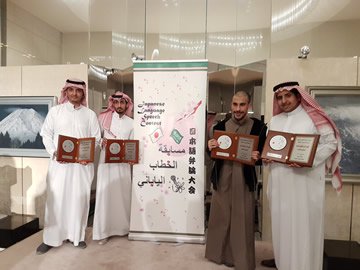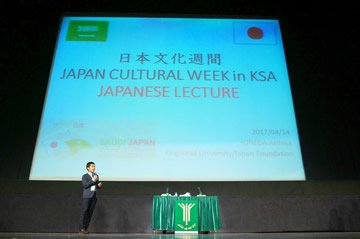Learners Who are Represented in the Numbers and Learners Who are Not (2)
King Saud University
YONEDA Akihisa
This is the second year that I have been dispatched as a Japanese-Language Specialist to the Japanese major course at King Saud University (hereinafter “KSU”) in Saudi Arabia. Last year, I wrote about the work I did in my first year in an article entitled “Learners Who are Represented in the Numbers and Learners Who are Not,” here (in Japanese). I would like to write a continuation of this.
At the Eighth Japanese Speech Contest, which took place in Saudi Arabia in 2015, the winner was a learner not affiliated with any Japanese-language educational institution. To paraphrase: KSU’s Japanese major missed out on a victory at the Japanese Speech Contest. Thinking about the fact that this is the only educational institution in Saudi Arabia where students can learn Japanese, I found myself frustrated as someone connected to KSU. On the other hand, as a Japanese-Language Specialist dispatched to Saudi Arabia, I was surprised that a learner who is not affiliated with a particular educational institution had won such a contest, and wondered whether there was anything more I could do to help this kind of learner.
We focused our efforts and had the students of KSU create speeches with more polished content for the Ninth Japanese Speech Contest in 2016. The themes for this contest were “The good points of Saudi Arabia that I would like to introduce to Japan,” and “Why I am learning Japanese.” When I saw the first speeches that the students wrote, I felt like I’d seen or heard parts of them before. I said to the students that I wanted them to tell me about their own experiences, and about the good points of Saudi Arabia that Japanese people don't know about. After that, the students created speeches with originality, including“Relationships with Mothers”, “The Reason of Wide Houses”, “How to Enjoy Life in Saudi”, and “Japanese and Anime Art”. As a result, the four participants from KSU were able to win prizes. For the students who had missed out on prizes at the last speech contest, this was an opportunity to feel how much they had grown in a year. And I was happy that my first year of work at KSU had created this kind of accomplishment.

Participants at the Ninth Japanese Speech Contest
On April 13, 2017, during Japan Cultural Week, the first public concert performance of a Japanese orchestra was held in Saudi Arabia. The 3,500-seat venue was completely full. The following day, a Japanese-language course took place at the same venue as part of the events of Japan Cultural Week. This course was for the general public. It was originally scheduled to take place in a hall that could hold 300 people, but participant numbers were expected to increase on the day, so the venue was changed to hold more than 3,000 people. It wasn’t full, but there were a lot of participants.
The fact that men and women were able to participate in the same venue was ground-breaking. For cultural reasons, in Saudi Arabia men and women don’t take classes in the same classroom. On this occasion, the men and women were separated into seats on two different levels, but the fact that they were able to take the course in the same space, that Japanese was spoken there, and that I was able to witness this as a lecturer was a valuable experience.

Japanese lecture during Japan Cultural Week
During the course, I introduced greetings, self-introductions, and Japanese that participants could use straightaway in the events of Japan Cultural Week. As the final challenge of the course, I said, “After this course is finished, please use the Japanese you have learned just now in this event venue to speak to a Japanese person.” After the course, many people spoke to me, from children to the elderly. I heard later on that a lot of the participants also spoke to the Japanese people in the venue. Last year, I wrote about the learners who are not represented in the numbers, and by coming here, I finally met such learners in real life, and was able to take the opportunity to help them experience Japanese and Japanese culture.
Moving forward, I hope to offer a fulfilling time to both learners who are represented in the numbers and learners who are not, through Japanese.
- What We Do Top
- Arts and Cultural Exchange [Culture]
- Japanese-Language Education Overseas [Language]
- Japanese-Language Education Overseas [Language] Top
- Learn Japanese-language
- Teach Japanese-language
- Take Japanese-Language Test
- Know about Japanese-language education abroad
- The Japanese-Language Institute, Urawa
- The Japanese-Language Institute, Kansai
- Japanese-Language Programs for Foreign Specified Skilled Worker Candidates
- Japanese Language Education for Japanese Children Resident Overseas and for the Descendants of Migrants
- Archives
- Japanese Studies and Global Partnerships [Dialogue]
- JF digital collection
- Other Programs / Programs to Commemorate Exchange Year
- Awards and Prizes
- Publications
